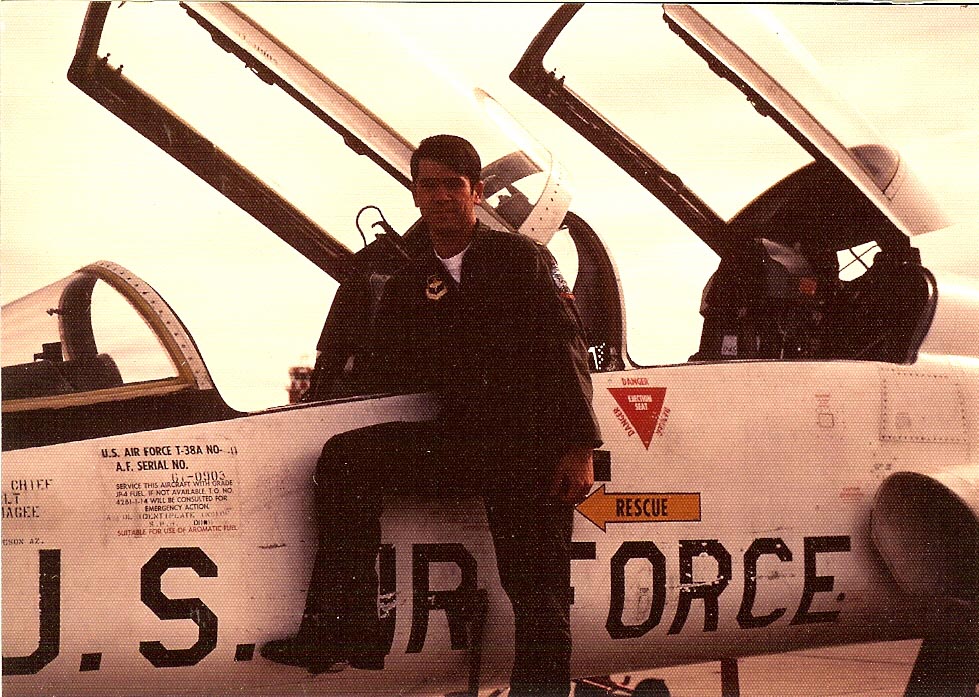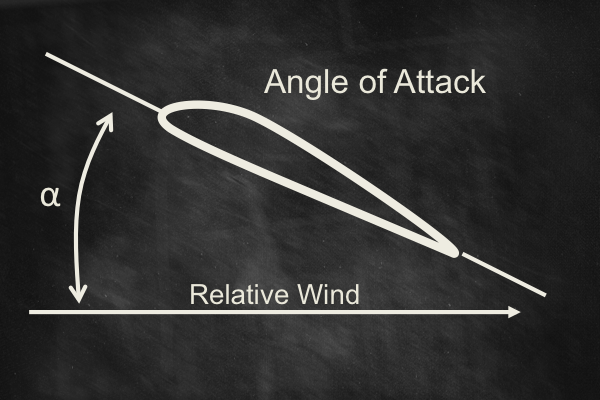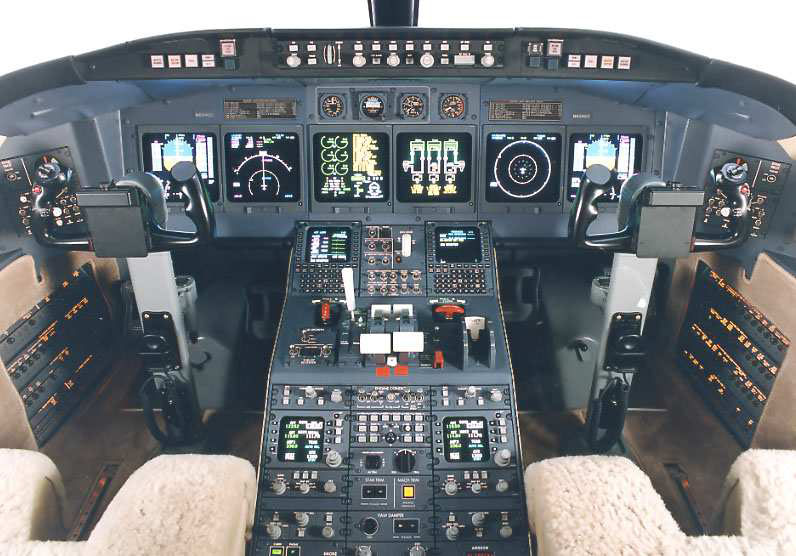Angle Of Attack is a staple of military aviation that seems to have been ignored by much of the civilian world. Too bad, AOA can save your life when the chips are down. For the science behind AOA, see Angle of Attack.
— James Albright

Updated:
2016-08-13
My last week in Tweets was part fun part bother: when is this going to end? Each instructor pilot knew my requirements were complete and that all I was doing was getting enough hours to graduate, so invariably after takeoff I heard, “Mind if I fly a bit,” and then spent the next 1.3 watching them have a good time. The last flight, however, was different.
Major Henry Deschenes, the flight commander and senior instructor pilot, greeted me with his normal, gruff exterior at full blast. “Training sortie last? Two ship?” he asked.
“Yes, sir.”
“See you at the brief.”
I had never flown with him, though he was supposed to fly with every student at one point or another. Our flight started with 39 students but was now down to 28, he could have made the time. No matter, from what I heard he wasn’t a lot of fun in the cockpit.
We were number two in the formation and I dutifully lined up left and just behind lead as he was cleared for takeoff. It was fellow stud Lieutenant Groves at lead with his instructor in the right seat. I didn’t know Groves’ first name, everybody called him Grover. He was a real goof ball and I really didn’t know him at all. This wasn’t sortie last for him so we organized the trip from start to finish to check off the remaining items he had to complete his formation requirements.
Grover raised his left hand and twirled his wrist. I nodded and pushed both throttles full forward and stood on the brakes. Grover tilted his head aft and then forward and as he did so we both released our brakes. Rotate, gear up, flaps up, and slide into position, nestled just a few feet from his wing tip. I was getting ready for the “Mind if I fly” routine, but it never came. After a while I was having fun.
Grover wasn’t the smoothest pilot out there and I had some difficulty keeping on his wing, but Deschenes kept quiet. The signal to move from one wing to the other was a barely perceptible wiggle of the wing tip. Grover practically turned into me with his signal but the message was understood. I dipped the airplane down a few feet and slid to the right. With a little back pressure I was nestled again, this time on the right. After a few lazy barrel rolls the nose came down and then, a bit abruptly, straight up. We were halfway through a loop and I could feel the aircraft mushing for lack of speed and I could see Grover’s instructor pounding the glare shield.
Screamer, I thought. It was the worst insult we studs had for an instructor.
“Look at this,” I heard from the right seat. It was the first thing he said to me in the airplane.
“What?”
“Look at this,” he repeated.
We were now fully inverted and the nose was coming down rapidly. My head was turned to the left as I was concentrating on keeping my T-37 a few feet away from Grover’s without hitting it. “I’m busy.”
“Just turn your head for a second,” he said, “look at this.”
We were now about 45 degrees nose low, inverted, but pulling less than two G's. We needed more G's to make this work. I turned my head and saw him with both hands sitting on his lap. “Pretty neat, huh?”
I jerked my head back just in time to see Grover reverse his roll, I guess he was abandoning the back side of the loop. I pushed hard to stay in position. “What are you talking about, sir?”
“You see how Grover’s IP is banging on the glareshield?”
“Yes, sir.”
“Well that’s usually me,” he said, “I fly with Groves a lot. This is the most relaxed I’ve been in months.”
In four months flying that Tweet, it was the best compliment I ever got, it was quite a graduation present. I got the next week off as all but one more of our flight finished. We were down to 27. Twelve didn’t make it, but those of us that did were headed to the fast mover.
Everything about the Northrop T-38 commanded respect. It was everything the T-37 was not. The T-37 was slow; the T-38 was supersonic. The T-37 was unpressurized, ugly, and took forever to climb to its ceiling of 25,000 feet. The T-38 was pressurized, sexy, and still held many world time-to-climb records. Even the names spoke volumes: the T-37 was a “Tweet,” the T-38 was the “Talon.” In 1979 the world’s premier aerial demonstration team, the United States Thunderbirds, flew the T-38. And starting on June 19th of that year, so did I.
As with just about every aircraft training ever concocted, it all began in class. Six months ago it was all strange and intimidating. Now, with half a year of flying in our log books and after having seen a third of our class washed out, this was going to be a new world. Even our now familiar chalkboard had a new seriousness to it.
“Everybody knows this,” the instructor began, “you wouldn’t be here if you didn’t. The T-38 is a new breed for all of you. You haven’t flown anything like it and there is a mistake on this diagram when it comes to the thirty-eight.”
We studied the diagram intently. It looked textbook perfect to me. Our textbook, and probably every aero textbook ever written on the subject, defines angle of attack as the acute angle between the relative wind and the chord line of the airfoil. The relative wind was simply the speed and direction of the air impinging on a body passing through it — the opposite of the aircraft’s flight path. The Greek symbol alpha — ∝ — was the engineer’s nomenclature for angle of attack.
“The wing,” our new instructor said after the prolonged silence, “is wrong. This wing has a camber to it, the top is curved and the bottom isn’t. Your mere mortal pilot thinks that’s what creates lift. That pilot is only half right. What would that pilot say about this wing?” He flipped the chalkboard over, end-for-end.
“This wing is symmetrical, it is the same on top as it is on the bottom. It produces zero lift at zero angle of attack.” We all sat back to the let the beauty of the airfoil sink in. “The skinny wing on the T-38 means you can go fast, but you need a helluva lot of AOA to produce any kind of lift at all. If you don’t understand that, you will become a smoking hole.”
A bit over the top, I knew. By 1979, the T-38 had been in service for almost twenty years and the Air Force had lost 134. The hyper dramatics aside, AOA needed to be respected.
We learned that the cambered wing of the T-37, and just about every airplane flying today, will indeed produce lift at a negative angle of attack. The most dramatic example would be on a B-52, which fully loaded actually takes off with its nose down. The B-52 community doesn’t talk about takeoff rotation, they call it “unstick.”
As aero engineering courses go, it was okay. About half of us in the class were engineers and the other half majored in basket weaving. You don’t need an engineering degree to fly airplanes, but it helps. The bottom line of the entire class was on the graph on the last page of the mimeographed instruction booklet we found on our desks.
There are two kinds of drag. Parasite drag is just what you think of when you think drag, it is the resistance of the airplane itself through the air. Induced drag is caused by the lift of the aircraft producing things like vortices which just want to suck it backwards. Induced drag only occurs when the wing is producing lift, the more lift the more induced drag. So Induced drag increases as lift increases, which usually happens at lower speeds. Parasite drag, on the other hand, starts low and goes up quickly. Where the two meet is where drag is at its lowest and the amount of thrust required to keeping flying is also lowest.
While the history major teaching the class didn’t say it, my favorite aero book does. From “Flight Theory and Aerodynamics,” Charles E. Dole, page 86,
For the jet aircraft, we have seen that the following items of performance that occurs at (L/D)MAX:
Minimum drag.
Maximum engine-out glide range.
Maximum climb angle.
Maximum endurance.
Many modern aircraft have artificial stick shakers to give the pilot a tactile warning that the aircraft is about to stall — to lose lift — and perhaps a little forward pressure is needed. The T-38 does not have a stick shaker, when its wings are losing lift, the entire wing shakes as the airflow above separates. As the angle of attack increases, a symmetrical wing produces more and more lift, but the buffet increases too. The only way to keep the T-38 in a nice, tight landing pattern is to “max perform” the wing. You want that buffet on the wings and the vibration in your hand. But not too much. So the good folks at Northrop gave us an AOA indication system:
The on speed “green donut” was just what you wanted to see on final with the wings level getting ready to land. But in the final turn, you wanted the “red chevron” in view to show you are really max performing the wing. If you didn’t get it, you wouldn’t be able to fly the aircraft in the confines of the pattern.
The AOA at which point the wing ceases to produce enough lift to keep the airplane flying is a constant for every given aircraft configuration, it doesn’t change with weight. If that number is defined as 1.0, all lesser angles of attack can define various flight regimes. In the T-38:
0.18 AOA - Defines “Max Range,” where the aircraft gets the most miles per fuel
0.3 AOA - Maximum Endurance, Best Glide, L/DMAX
0.6 AOA - Approach Speed
0.9 AOA - Buffet
1.0 AOA - Stall
The angle itself isn’t important; it is the ratio of the angle to the stall AOA that counts.
Commit the Angle of Attack for L/DMAX (usually 0.3) to memory, it is your best glide and endurance speed and can save your life.
One year later, flying a KC-135A off the cliff runway at Anderson Air Base in Guam, one of the four engines blew itself into little pieces as I was flying my heaviest takeoff ever. We got to the end of the runway and we still didn’t have rotate speed. I rotated anyway.
The Angle of Attack indicator said we were nearing a stall though the airspeed indicator was steady at what should have been a flyable speed. The airplane would not climb. As the captain initiated fuel dumping procedures I kept my eye on the AOA. It eventually reached L/DMAX and I was finally able to climb. After the fact we discovered we had been overloaded with cargo and the airplane was heavier than we thought. Of course the AOA indicator was not fooled.
Twenty years later I was flying a Challenger 604. The 604 was a challenging airplane in a crosswind, was a challenge climbing to high altitudes, and tended to challenge one's resourcefulness when things went wrong and the MEL was needed. Our small operation of three aircraft and eight pilots was quickly dwindling away to nothing, as the company was bought out in a corporate takeover and the new boss decided our flight department was nothing more than a red mark on a balance sheet that needed help. We were down to four pilots and spent much of the time with contract pilots in the right seat. I had never flown with first officer “I know that” before, but Mister I Know That seemed competent enough.
It was to be my last flight before moving off to the next job. The airplane’s primary air data computer was broken and the Challenger philosophy on redundancy was to not have any, unless the Feds forced you to. So we could fly, but we had to use the air data computer dedicated to the autopilot. “We have to couple to the autopilot immediately after takeoff,” I explained to the right seater.
“I know that.”
I knew he was going to say that. While taxiing out the sole remaining air data computer failed. I parked the airplane on the taxiway and pulled out my cell phone. “Second greatest invention in aviation,” I said to Mister I Know That, pointing to the phone. He didn’t react so I couldn’t tell him what the greatest invention was. (The lavatory.) I spoke with our director of maintenance who said pulling and resetting a circuit breaker would solve all my problems. I did, it did.
As soon as the aircraft was climbing I called for gear up, flaps up, autopilot on. Mister I Know That raised the gear, retracted the flaps, and pressed the autopilot button. I relaxed my hand pressure on the yoke only to feel the aircraft roll to the left. I pressed the autopilot disengage button and nothing happened.
The bank was now about 20 and increasing. “Try your disengage button.” He did and nothing happened. The bank was now about 35 and increasing. “Hit the override bar.” Mister I Know That didn’t react. The override bar was on his side of the cockpit and was supposed to override all autopilot functions in case of a complete systems failure. “Hey,” I said, “did you hear me?” He was motionless. I reached over and hit the bar and regained control of the aircraft. The airspeed indicator and altimeter were producing nonsensical numbers. “Tell tower we are coming back for an immediate landing.”
Mister I Know That was still motionless. I punched him in the shoulder and he looked at me. “You okay?” I asked.
“Yeah.”
We got our clearance and I asked for the landing gear. Mister I Know That pointed at the airspeed indicator, which said we were too fast for the gear. “The indicator is lying,” I said, “you know we can’t have this high a deck angle at that speed.”
He shrugged his shoulder and extended the landing gear. I was really guessing about the speeds. The aircraft had an AOA indicator which was marked “not usable for flight.” I remember being so alarmed by that when I first heard it, that I made notes about the aircraft’s usual pitch angle for various configurations. I knew that properly configured for landing, the nose would be three to five degrees below level flight — another Challenger oddity — so we were okay.
We walked away from the landing and we grounded the airplane until the air data computer was replaced. I vowed to get out of the Challenger as soon as I could, and to never again fly an airplane without a usable AOA indicator.









